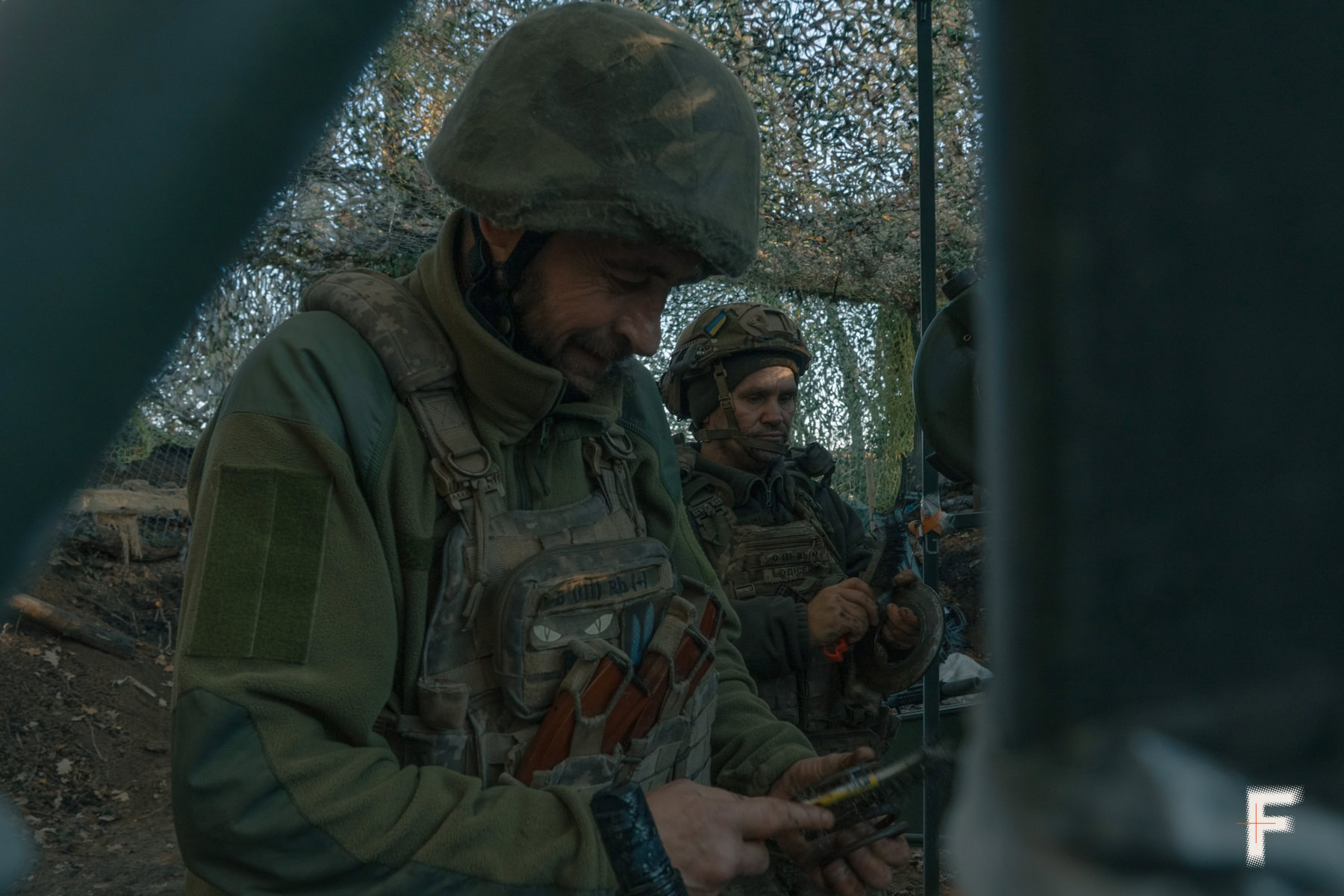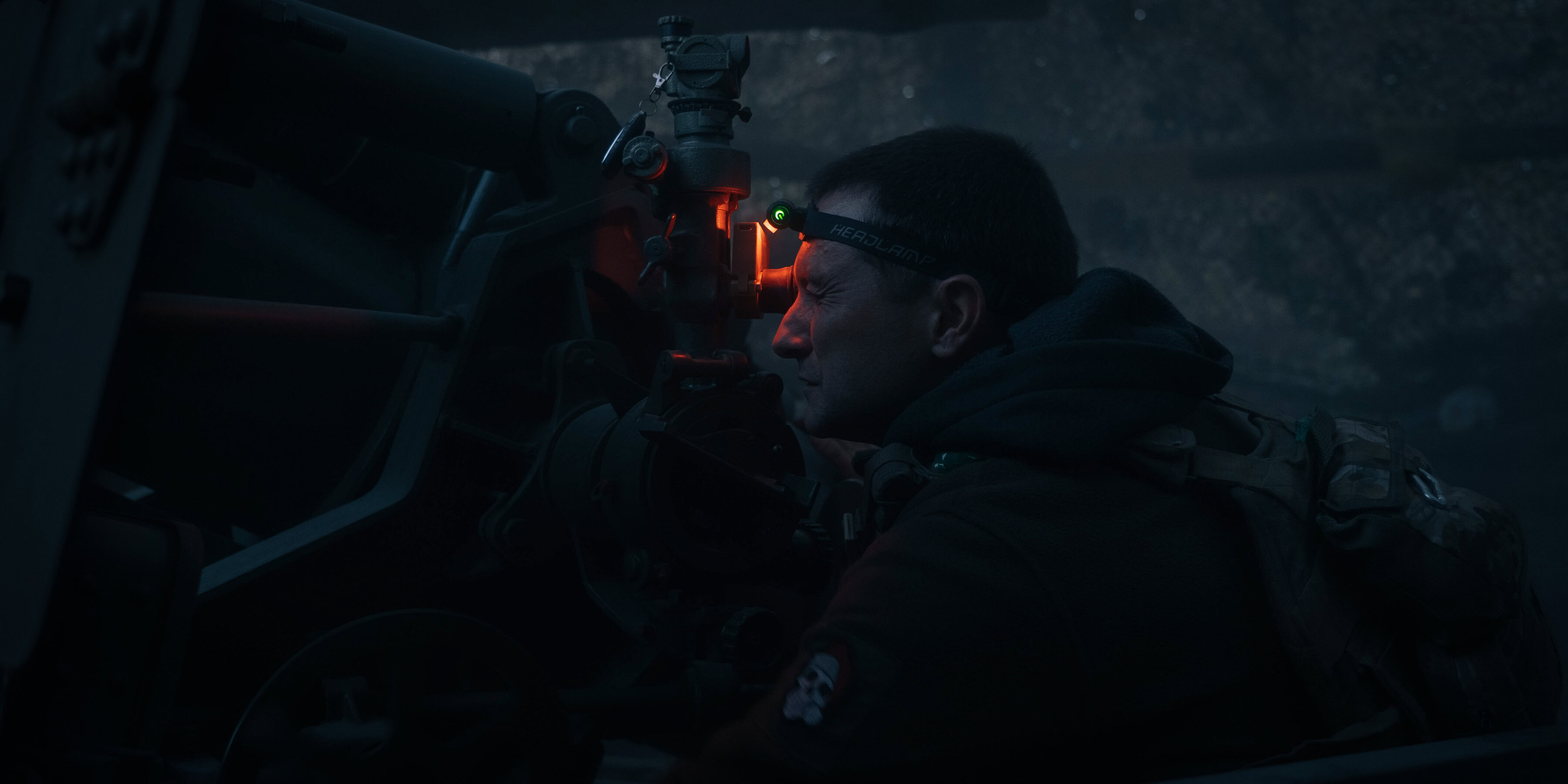

Gun ‘Milf’ gives the occupiers hell – the 80-year-old M114 howitzer still firing near Pokrovsk
The American M114 gun is now in action on the Pokrovsk front, holding back the Russian onslaught. Originally built in 1943 to halt the advance of Nazi forces during World War II, it was transferred to Ukraine by the Czech Republic during the full-scale war. The Frontliner team visited the positions of the 152nd Jaeger Brigade artillerymen and saw the legendary gun in action.
Late at night, mice scurry along the ceiling of the dugout. The silence is broken by a soft “pew-pew” – one of the guys is playing a shooting game on his phone while lying on his bunk. The sounds of virtual gunfire mix with the real explosions of something heavy outside.
A few hours earlier, getting to the positions was in doubt. An enemy FPV set fire to the camouflage net covering the gun. The men put out the blaze and then endured a long, tense wait in the shelter. Had the position been exposed, other drones and shells would have arrived within the hour to destroy it completely.
A crew where one is worth two
That evening, the position didn’t come under fire again. But a vehicle carrying nearby troops wasn’t so lucky. Upon impact, the pickup flipped into a two-and-a-half-meter-deep anti-tank ditch. Fortunately the soldiers inside survived, though concussed, and made it to the Jaeger Brigade artillerymen. In the dugout, they waited until another vehicle arrived to take them to the nearest village.
In the morning, once the sky had cleared, the artillerymen went out to assess the damage from the night before and patch the holes. Everything was coated in white from the fire extinguisher, reminiscent of frost. Along the way, they showed off the gun and explained its features: here are the aiming marks, called ‘hryvnias’ and ‘kopeks,’ while the enemy’s equivalent marks are called ‘rubles.’
[Translator’s note: ‘Hryvnias’ and ‘kopeks’ are a reference to Ukrainian currency. By contrast, the enemy’s equivalent marks are called ‘rubles’ after their own currency.]


The gun commander, Roman, callsign ‘Kostyl,’ explains the features of the M114. It’s a 155mm howitzer with a range of 14.5 km. Technically, the crew should consist of 12 people, but here six handle it just fine. Roman insists that’s all they need:
“This is a good crew. Everyone knows their role. Everyone takes turns doing every task, exactly as it should be. It’s a bit challenging because all the work is manual. People have to load it by hand and ram the shell themselves. It’s heavy, and it lacks some of the auxiliary parts you see on other models, like wheels on the carriage. Here, you have to move it manually. And the shell weighs between 42 and 44 kilograms,” the soldier says.
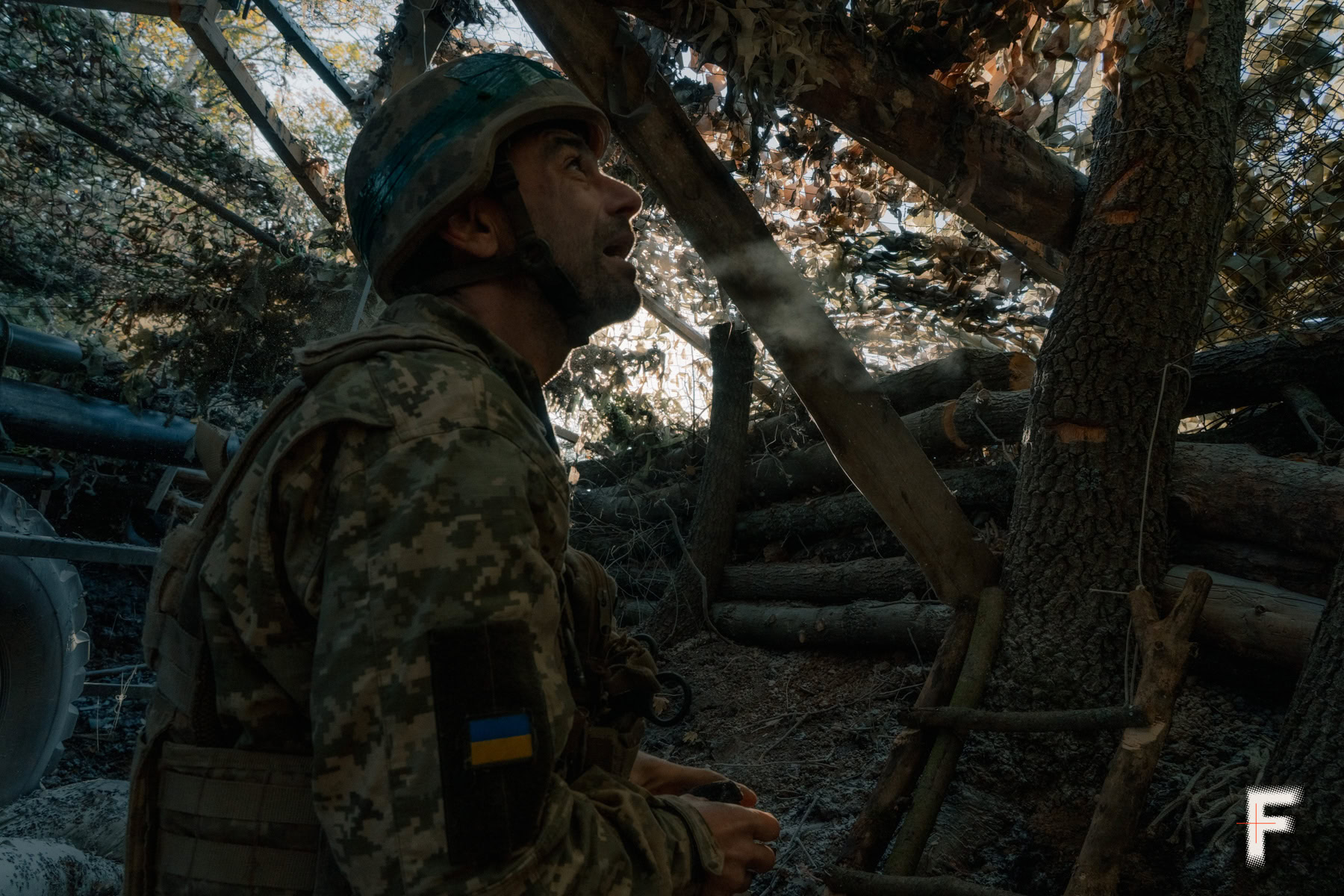

The gun can fire two rounds per minute, though the artillerymen say they often manage even more. That puts extra demand on maintenance, requiring more frequent cleaning and lubrication. The humid climate adds to the challenge – the howitzer wasn’t designed for such conditions, having mostly served in Vietnam and Iraq. Most firing takes place during the day in multiple sessions. Sometimes the pace is so intense that 197 shells are fired in just two weeks. Occasionally, aerial reconnaissance sends the gunners videos of particularly impressive hits, which both excite and motivate them.
‘Bluing’ the one that ‘stains’ the sky
Because of its venerable age, the gun is nicknamed ‘Milf,’ or ‘Grandma.’ Its usual targets are enemy mortar crews, infantry, and supply depots. On one occasion, it managed to eliminate a drone crew attacking neighboring positions.
The men clean and polish the gun, patch the netting with ties, and repair a beam that was also damaged. At the same time, they listen to the radio and watch the sky. FPVs can only be detected by sound. A few times, a faint buzzing is heard, but at a safe distance.
The number of enemy reconnaissance and strike drones,
like Molniia and Gerbera, keeps increasing.
Among the troops, FPVs are nicknamed ‘bluing’ because the drones glow blue in the dark. In the context of war, the saying ‘bluing is evil’ takes on a whole new meaning.
[Translator’s note: In Ukrainian, bluing is a colloquial term used to mean alcohol.]
But that day, the team can’t get to work – not due to a lack of targets, but because the sky is too ‘dirty.’ ‘Kostyl’ admits that operating the gun is getting harder with each passing day:
“Our area is being scoured more and more thoroughly. The number of enemy reconnaissance and strike drones, like Molniia and Gerbera, keeps increasing. And, although it is painful to admit, the FPVs are getting more and more effective every day. Often, we’re given coordinates, start firing, and then a drone shows up. We might think we’ve hit something, but then the shelling begins, the enemy FPVs start working actively, and we barely have a moment to think about what we actually hit. We just try to keep ourselves alive,” says the gun commander.
On our side, drones act primarily as our eyes – without them, hitting targets at such long distances would be much harder. Interceptor drones and electronic warfare units are also active in the area, but they become powerless against the Bluing on fiber-optic lines. The artillerymen say that a Russian unit called Rubikon – an elite drone-specialist formation – is operating against them here.


At a certain moment, the long-anticipated order to fire comes through. The soldiers take less than a minute to strap on body armor and helmets and dash out of the dugout.
They lift part of the netting off the gun, and one of the soldiers hauls a ‘kabanchyk’ – that’s what they call the shells. The team moves with the precision of clockwork. But during the aiming stage, commands ring out: “Cease fire!” and “Take cover!” Another threat looms in the sky, and everyone ducks back into the dugout.
[Translator’s note: In Ukrainian, Kabanchyk means little boar.]
The dugout’s layout takes the FPV threat into account. A heavy mat at the entrance is meant to stop drones, and the corridors are narrow and winding. One leads to the sleeping quarters, the other to the kitchen.


The first hit – like a first-time kiss
Back in the dugout everyone falls back into frontline routines: talking, scrolling social media, sipping coffee. A tempting idea surfaces – strip the EW unit off the roof of the pickup that flipped nearby the night before. Maybe take the wheels too. It won’t last long – sooner or later it will be destroyed, either by the enemy or by friendly forces. But it’s harder to accomplish than it sounds: in the shortest possible window of time you’d have to drop into the ditch, haul the EW gear up, and get out again.
[Translator’s note: EW refers to radio‑electronic warfare gear used to jam or intercept enemy communications and drones.]
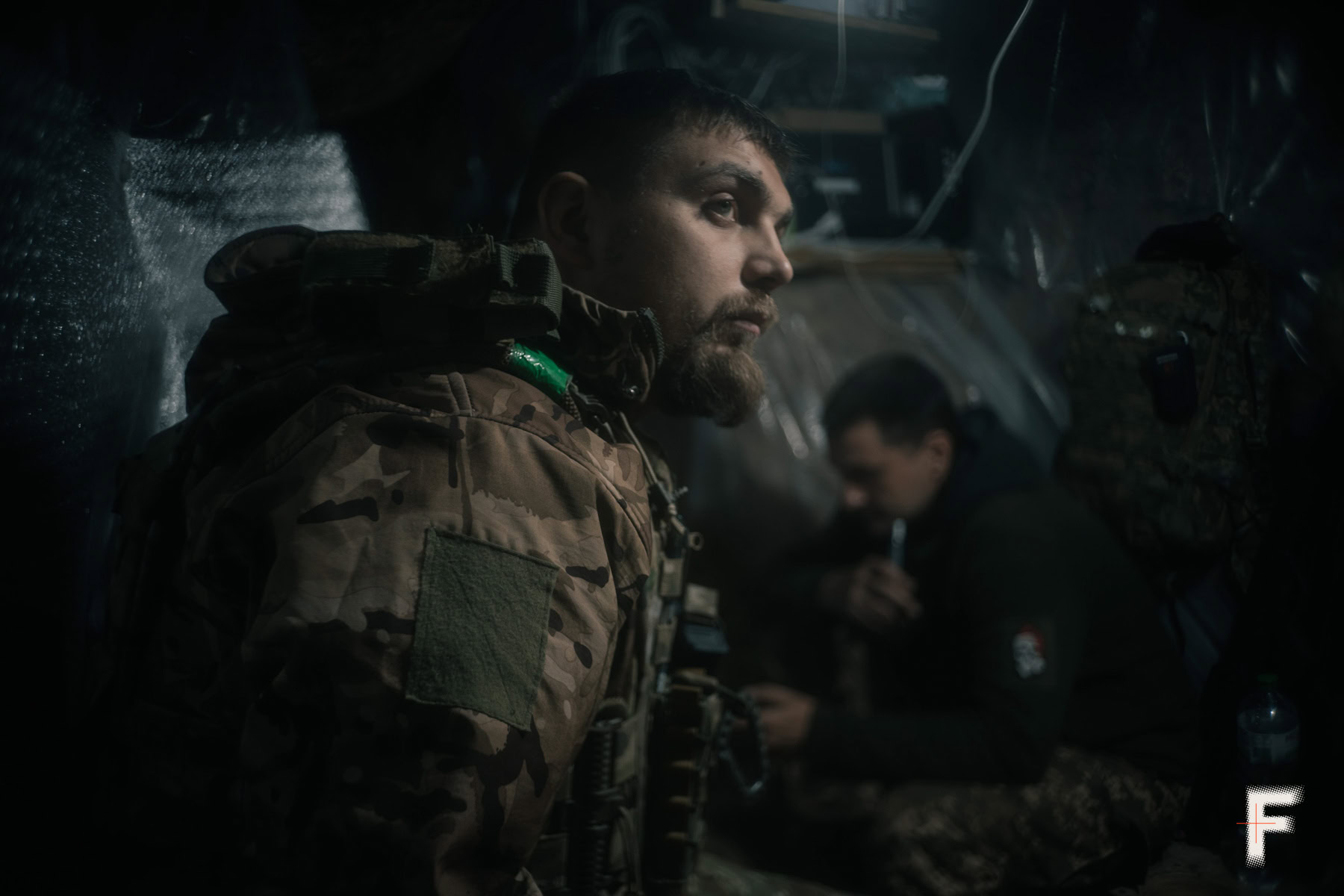

Once again, the constantly ‘dirty’ sky prevents them from moving forward. So the soldiers put that idea aside and share their stories.
‘Kostyl’ began his service in 2022 with an air defense unit in the western part of the country, where he’s from. A year ago, he was transferred to the 152nd Brigade. He was supposed to join the infantry, but the world sent him a peculiar kind of sign:
“I knew I was being given a group – I was the group leader, and we had to coordinate before going out to the trenches. Then I was handed a compass, which I later learned was an artillery compass. I thought, why would an infantryman like me need an artillery compass? Three days later, I get a call from the mobile company asking, ‘Do you want to join the artillery?’” the soldier recalls.
He trained as a gunner and even traveled to Portugal to learn how to operate this specific howitzer. He feels that foreign instructors had little to teach Ukrainian soldiers hardened by the daily grind of combat. After the training, the unit went through coordination exercises before heading to the front.
‘Kostyl’ recalls the thrill of the gun’s first hit:
I think we’ll always reminisce about the first strike. When we went into combat, we had just started firing, and then they told us, ‘Fourth shot, guys, one hundred percent hit!’ They sent us the video showing how we hit – a huge building with enemy infantry inside. That was amazing. I think every artilleryman will remember their first hit,


He says the hardest part is being away from home and loved ones. Otherwise, life on duty is fairly steady. Gunners rotate every 5 to 7 days, and the last day before a break is usually the toughest.
Everything was hitting our position,
so our mates couldn’t even get food to us.
Unlike his comrade, Yurii, a crew member with the call sign ‘Odysseus,’ had experience fighting in the infantry. Once he was stuck on his position for 25 days, as the situation made it impossible to rotate the infantry:
“We spent about ten days on the position. One night, our comrade was wounded – and then it was just the two of us left. My partner still had a titanium plate in his leg, which made things even harder for him. We took turns covering for each other, standing four-hour watches at the observation post. It was extremely tough. They shelled us heavily with mortars, drones – everything was hitting our position, so our mates couldn’t even get food to us. Not even by drone,” recalls Yurii, looking back on his days as an infantryman.
During another rotation, “Odysseus” nearly burned alive while on watch at the observation post – his position came under attack from incendiary drone drops:
“I was on watch around 11 a.m. when sparks near the entrance caught fire, set off by a drone. Luckily, I didn’t panic. I pulled myself together and thought, if I run out right away, I’ll die. So I pressed myself against the wall and waited, hoping the drone would think no one was there and fly off. But it kept burning, and I could see there was no way out – any second, I’d be engulfed in flames. I gathered myself, sprinted to the dugout with all my strength, practically diving in – and a split second later, the entrance was already on fire,” Yurii recalls.


After some time, he was offered a transfer to the artillery, and he accepted. This rotation is his first since completing training, and he’s content in his new role:
“I like it more, of course – infantry was much harder. My job is to charge the powder. We have a friendly team, the crew will help if you don’t know something, plus the logistics are better, and it’s a bit safer,” Yurii ‘Odysseus’ shares.
He earned his call sign because of his origins in Odesa and his numerous deployments – over the course of a year, he served in Chernihiv, Khmelnytskyi, Mykolaiv, and Donetsk regions. “I got around – just like Odysseus!” the soldier laughs.
Before mobilization, Yurii worked as a warehouse worker. He has five daughters and a small farm near Kyiv. He says it’s physically very hard for his wife and daughters to manage everything on their own, so whenever he came home on leave, instead of resting, he took on the heavy physical work that was too demanding for them.
“Gun, fire!”
The order to engage comes late in the afternoon, almost at dusk. “Milf” lifts her massive trunk while one of the soldiers calls out the target coordinates. The command rings out again: “Gun, fire!” The ‘kabanchyk’ soars toward an unseen target. The boom of the 155-mm round is deafening, yet the gunners don’t wear active ear protection – they say their eardrums have long since adjusted.
After the third shot, the unmistakable buzzing of FPV drones fills the air above the gun. Everyone dives under the netting, camouflaging the gun. The gunners crouch, hands over their heads, bracing for an explosion. Thankfully, it never comes. Later, they explain that the netting would only shield them from a direct hit, but had the drone detonated, injuries and concussions would have been unavoidable.
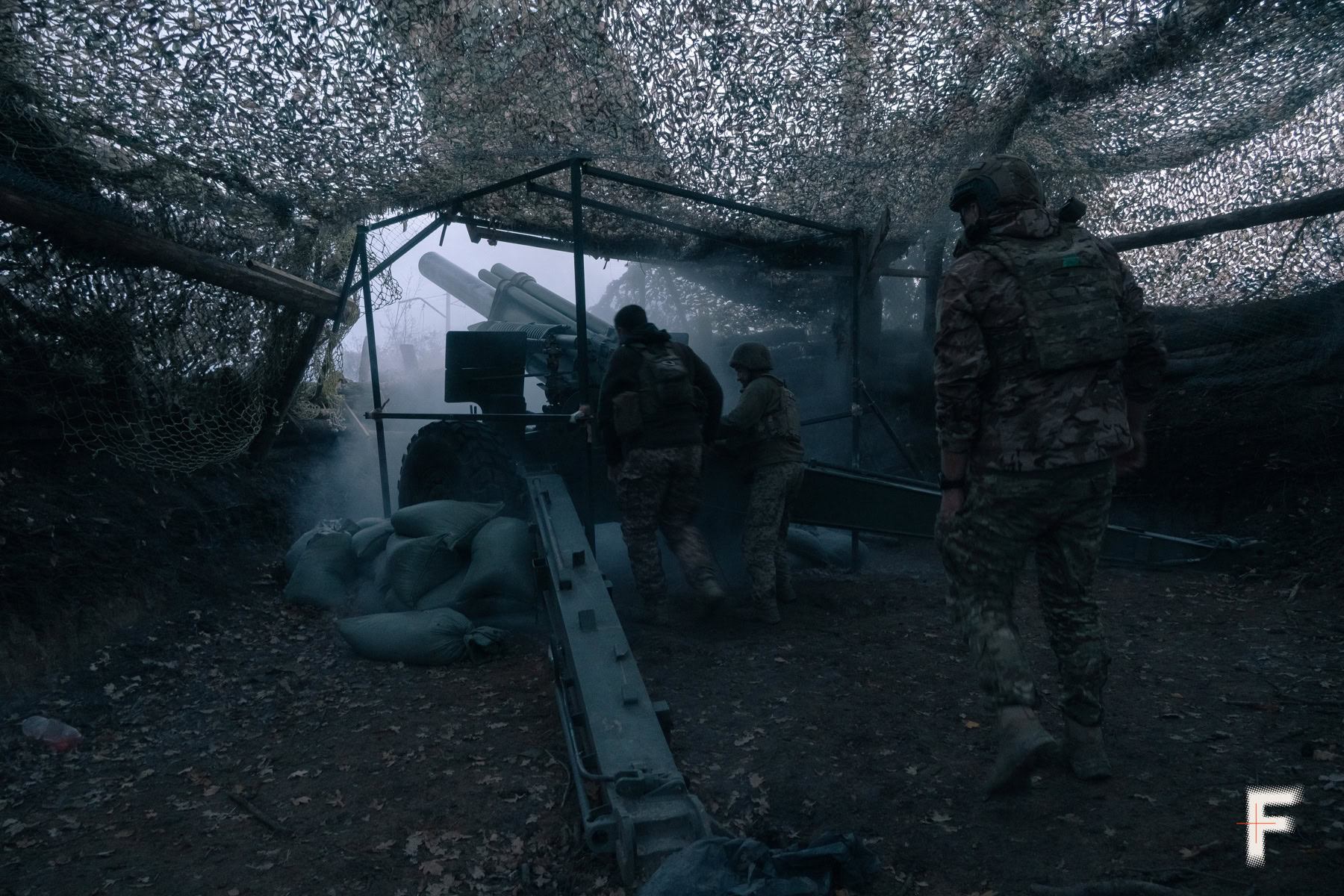

As soon as the threat passed, they resumed firing. The last of the five shots was noticeably more powerful than the others – the shockwave seemed to pass right through the body. ‘Kostyl’ explains that the difference was due to a different type of powder:
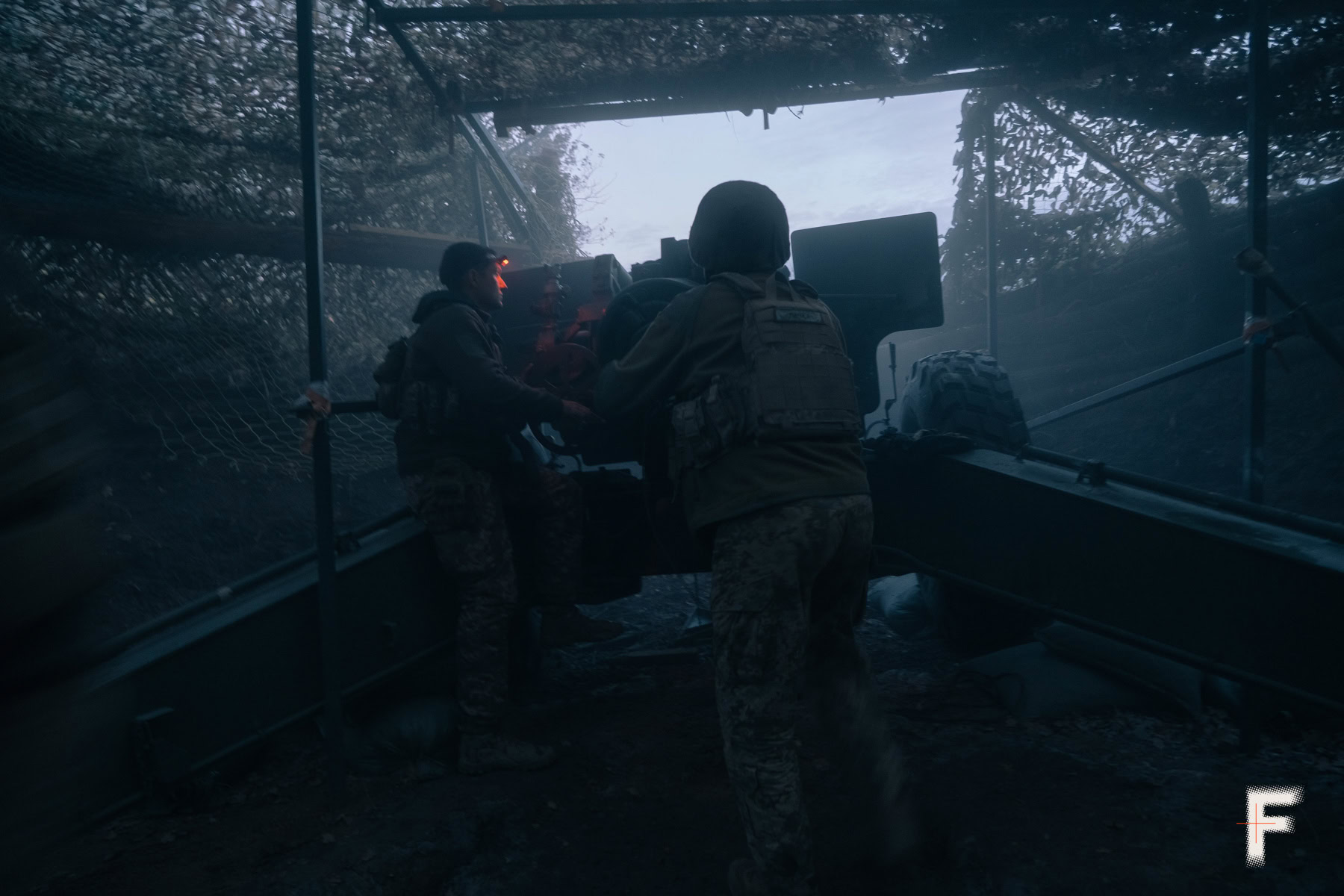

“So the powders – they’re of different quality, different manufacturers, different types. Some are like granules, no bigger than a fingernail. The earlier shots used powders divided into five small bags, so all five bags fired together. But the last shot was different – we used what we call ‘spaghetti’ powder: long, solid charges, not divided into bags,” Roman explained.
That day, the guys were supposed to go on a break. First, they were to bring the ammo to the position, then rotate in the next shift. But as the vehicle carrying the ammunition approached, an FPV drone set fire to the vehicle from which they hadn’t managed to remove the EW gear. The truck burned like a torch. What was meant to happen under the cover of darkness now unfolded in the light of the flames.


The guys were in such a hurry to unload the dangerous cargo that they grabbed the 43-kilogram shells on their own, even though normally they’re handled by two people.
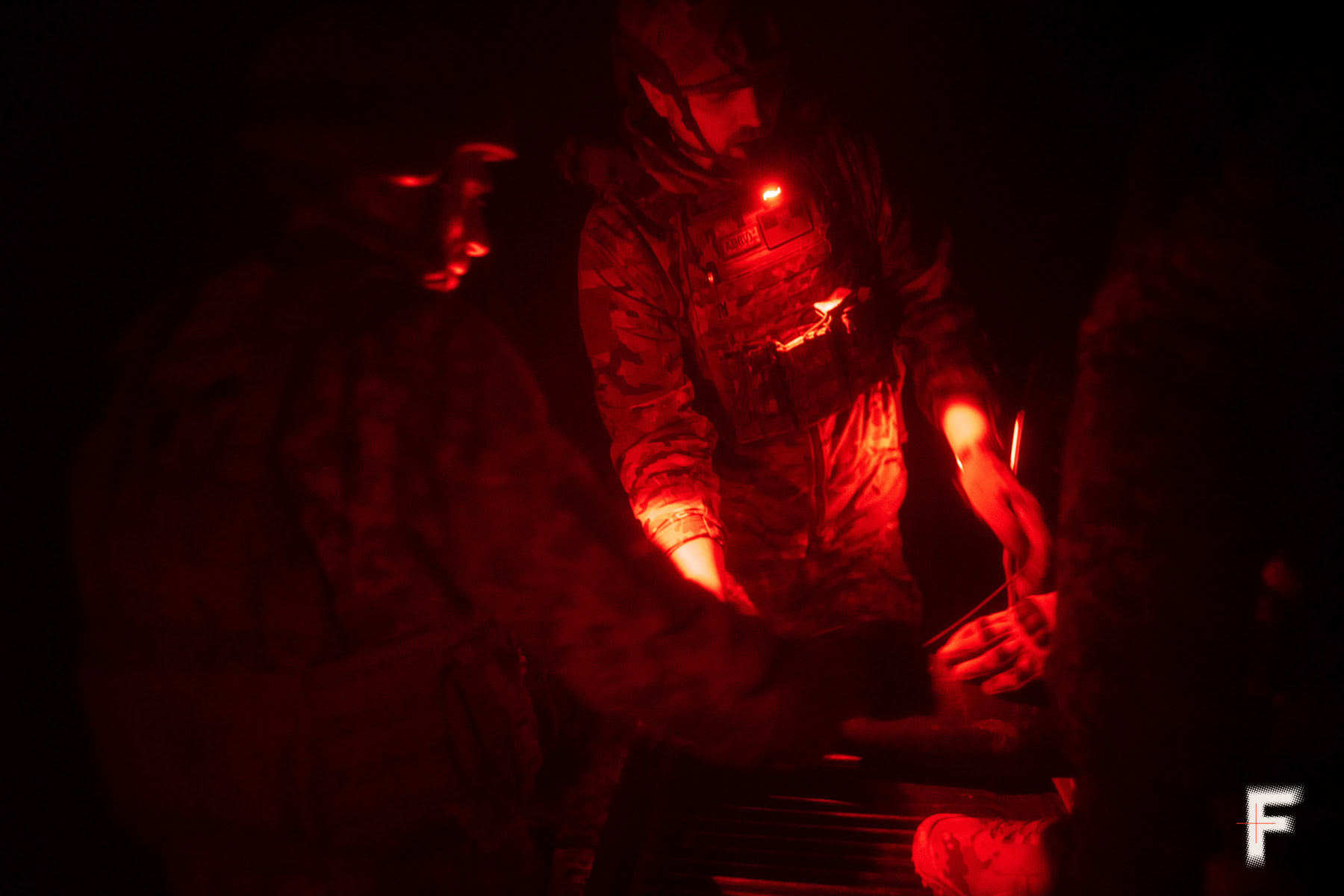

However, the close call was avoided – the vehicle rumbled off into the night over the rough roads to fetch the relief. The next night, the gunners will sleep not on wooden bunks but in the relatively comfortable shelter of a nearby frontline village. Only “Milf”, sometimes called Grandma, won’t get a break. Well into her ninth decade, she continues to respond to the same command, given to her in many languages around the world: “Gun, fire!”
Text: Olena Maksymenko
Photos: Marharyta Fal
Adapted: Irena Zaburanna
Читайте також — “If you really want to live, you will survive” – the story of 21-year-old infantryman ‘Korshun’

